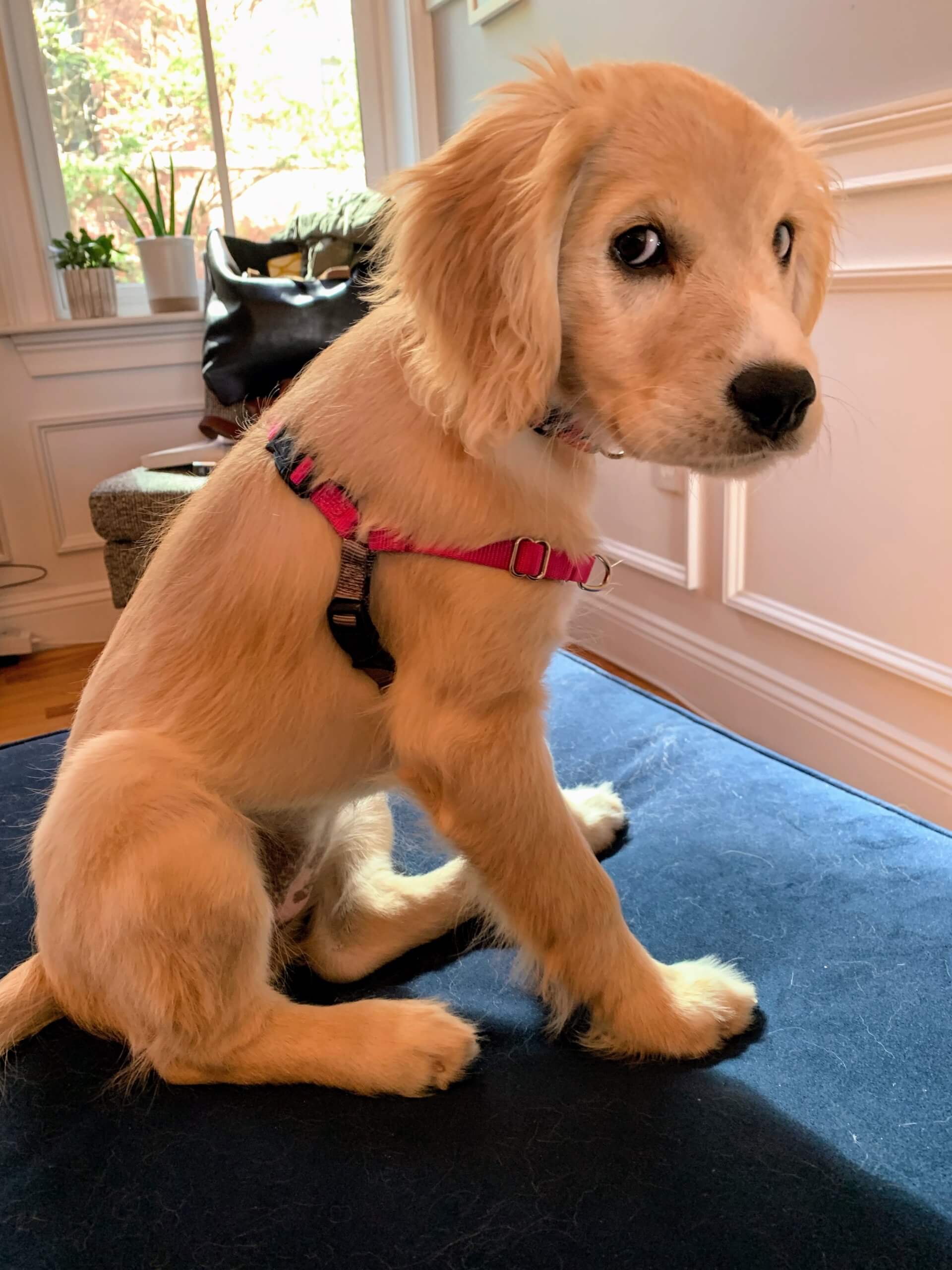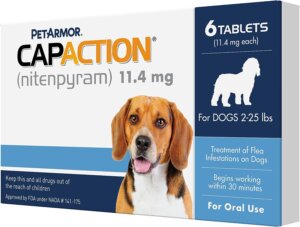 I asked Artificial Intelligence (AI) to help me come up with a plan to “rid my dog of fleas” but I didn’t like the answer I got. So, better than what you can find with AI, here is the Zen Dog Training version of how to rid your dog of fleas!
I asked Artificial Intelligence (AI) to help me come up with a plan to “rid my dog of fleas” but I didn’t like the answer I got. So, better than what you can find with AI, here is the Zen Dog Training version of how to rid your dog of fleas!
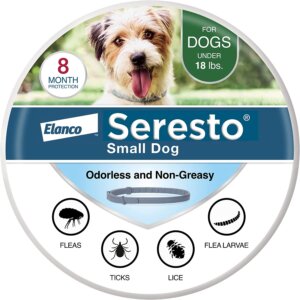 First, contact your veterinarian to ask what they advise you to do, and see if they recommend getting a dose of CapStar or similar brand (nitenpyram) one-time oral flea treatment. In addition, ask your vet if they recommend a flea and tick collar like the Seresto collar which kills fleas and ticks for up to 8 months. Please make sure you check with your veterinarian, as some dogs might be allergic to these products, or your vet might make different recommendations about what products to use.
First, contact your veterinarian to ask what they advise you to do, and see if they recommend getting a dose of CapStar or similar brand (nitenpyram) one-time oral flea treatment. In addition, ask your vet if they recommend a flea and tick collar like the Seresto collar which kills fleas and ticks for up to 8 months. Please make sure you check with your veterinarian, as some dogs might be allergic to these products, or your vet might make different recommendations about what products to use.
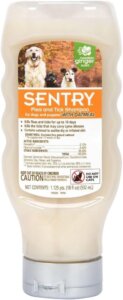 While flea shampoos and combing your dog for fleas can be an effective way to kill the fleas on your dog, they might not be as effective as the oral treatments. Because with shampoos, you must follow the instructions carefully and be very thorough with working the shampoo into your dog’s fur. Unless your dog is allergic or your vet does not recommend them, the oral treatment seems to be the best choice.
While flea shampoos and combing your dog for fleas can be an effective way to kill the fleas on your dog, they might not be as effective as the oral treatments. Because with shampoos, you must follow the instructions carefully and be very thorough with working the shampoo into your dog’s fur. Unless your dog is allergic or your vet does not recommend them, the oral treatment seems to be the best choice.
Flea Life Cycle
Most fleas have four life stages: egg, larva, pupa, adult. Keep in mind that each female flea can produce more than 40 eggs a day, so depending on how many fleas are on your dog you could be dealing with 100’s of eggs a day.
These eggs are constantly falling off your dog as they move around your home, yard, and bed – which is gross to think about, especially if you let your dog sleep in the bed with you! Depending on the heat and humidity of your home, these eggs will take 2 days to 2 weeks to hatch into larvae.
The larvae will take anywhere from 5-20 days to spin a cocoon, which protects the pupae for days, weeks, or even months! Unfortunately, due to their slightly sticky surface, larvae are very hard to vacuum and sweep. In fact, the cocoon can even protect them from flea killing powders or sprays! This means that once your dog has fleas, the odds are that these larvae are waiting in your home (for weeks and months) for the right environment to hatch and look for a host.
The good news is that you can wake these dormant larvae from their protected cocoon by tricking them into thinking there is a host, by vacuuming. Larvae awaken when they encounter body heat, higher levels of carbon dioxide, or vibration, so the vibrations from vacuuming is a great way to trigger them to emerge from their cocoon.
Plan for Ridding Your Dog of Fleas
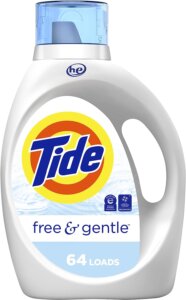 The best way to rid your dog of fleas is to first kill all the adult fleas on their body with Capstar or flea shampoos. Then spend the next month or two vacuuming the areas your dog spends time in and washing their bedding, rugs, or any dog jackets/coats they wear.
The best way to rid your dog of fleas is to first kill all the adult fleas on their body with Capstar or flea shampoos. Then spend the next month or two vacuuming the areas your dog spends time in and washing their bedding, rugs, or any dog jackets/coats they wear.
While it seems excessive, we have found that the most effective way to rid your home and dog of fleas is to vacuum every day for a week, to kick-start the process, then vacuum twice-a-week for a month, and finally every 7-10 days (at least). If vacuuming daily is not possible, then vacuuming every other day for the first week is another option.
Daily cleaning can be exhausting. We recommend starting with a whole house deep clean and then daily vacuuming in areas where your dog spends most of their time.
Focus your vacuuming and cleaning efforts on the areas your dog tends to go. It is especially helpful if you limit where your dog goes in your home for the next few weeks. If you can keep your dog out of bedrooms or other parts of your house you can reduce the area where you need to intensely vacuum and clean.
Pro tip: Limiting where your dog goes will help reduce the areas to clean daily. Keep in mind that if your dog had fleas for a while then eggs, larvae, and adult fleas will be everywhere!
Washing your dog’s clothing, bed, blankets etc, is also an essential part of the process. Wash and dry everything in as hot a temperature as the fabrics can handle. While washing with hot water is best, frequent washing with a high-quality laundry detergent (we use Tide Unscented Free and Gentle) on the warm setting should be enough to kill and remove the eggs, larvae, and any adult fleas.
Pro tip: we recommend covering your dog’s bed, bottom of the crate, or places they like to sleep with washable towels or blankets and washing everything daily for a week, twice-a-week for a month, and then every 7-10 days.
Breaking the life-cycle
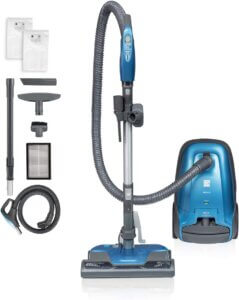 What you are trying to accomplish is to break the life-cycle of the fleas by first killing off the adults so they stop laying eggs. Daily vacuuming should help you rid your home of their eggs, larvae, pupae, and adults. Washing clothes, bedding, rugs, and carpets will help remove the eggs, larvae, pupae, and adult fleas as well.
What you are trying to accomplish is to break the life-cycle of the fleas by first killing off the adults so they stop laying eggs. Daily vacuuming should help you rid your home of their eggs, larvae, pupae, and adults. Washing clothes, bedding, rugs, and carpets will help remove the eggs, larvae, pupae, and adult fleas as well.
Most importantly, daily vacuuming will help wake up the embedded and protected pupae so you can catch and kill the adults that emerge.
Since adult fleas will be coming out of their slumber as you vacuum, your vet may recommend a second dose of CapStar about 2-3 weeks after you start the treatment process. This will help ensure that any adults that emerged and found your dog are eliminated before they can lay too many more eggs.
A great trick is to use an over-the-counter flea collar (which most veterinarians do not recommend putting on your dog) and put it inside your vacuum canister to kill any eggs or fleas that are pulled in there. If you use a bagged vacuum, be sure to toss out the bags more frequently, especially during the first week or two. Here is the vacuum we recommend and use at our home and to clean our training room Kenmore Pet Friendly Lightweight Bagged Vacuum.
Other things to consider when ridding your home and dog of fleas
Try to determine how your dog got fleas to begin with. If your yard is infested, you may need to hire an exterminator to help reduce them. If you think your dog got fleas from visiting a doggie daycare or playing with another dog, alert them that you suspect they have a flea issue and avoid them until they can clean up.
Figuring out how your dog was initially exposed to fleas will help you prevent them from getting re-exposed and bringing adult fleas into your home again.
If you have multiple pets then all your pets need to be treated at the same time. Please be very careful with the products you choose, as some dog treatments should NEVER be used on cats. (Discussing what treatments to use with your veterinarian should always be the first step.)
Finally, hiring a cleaning service to come every week or two during the process can be very helpful. They can help you deep clean areas of the house or free up your time to vacuum and wash. Knowing a cleaner is coming can be a good inspiration to keep you on track with cleaning efforts. Make sure they know about the fleas and if they use a canister vacuum, give them a flea collar to help ensure fleas that are vacuumed up are killed.
We truly hope this helps keep your dog and home flea-free!

